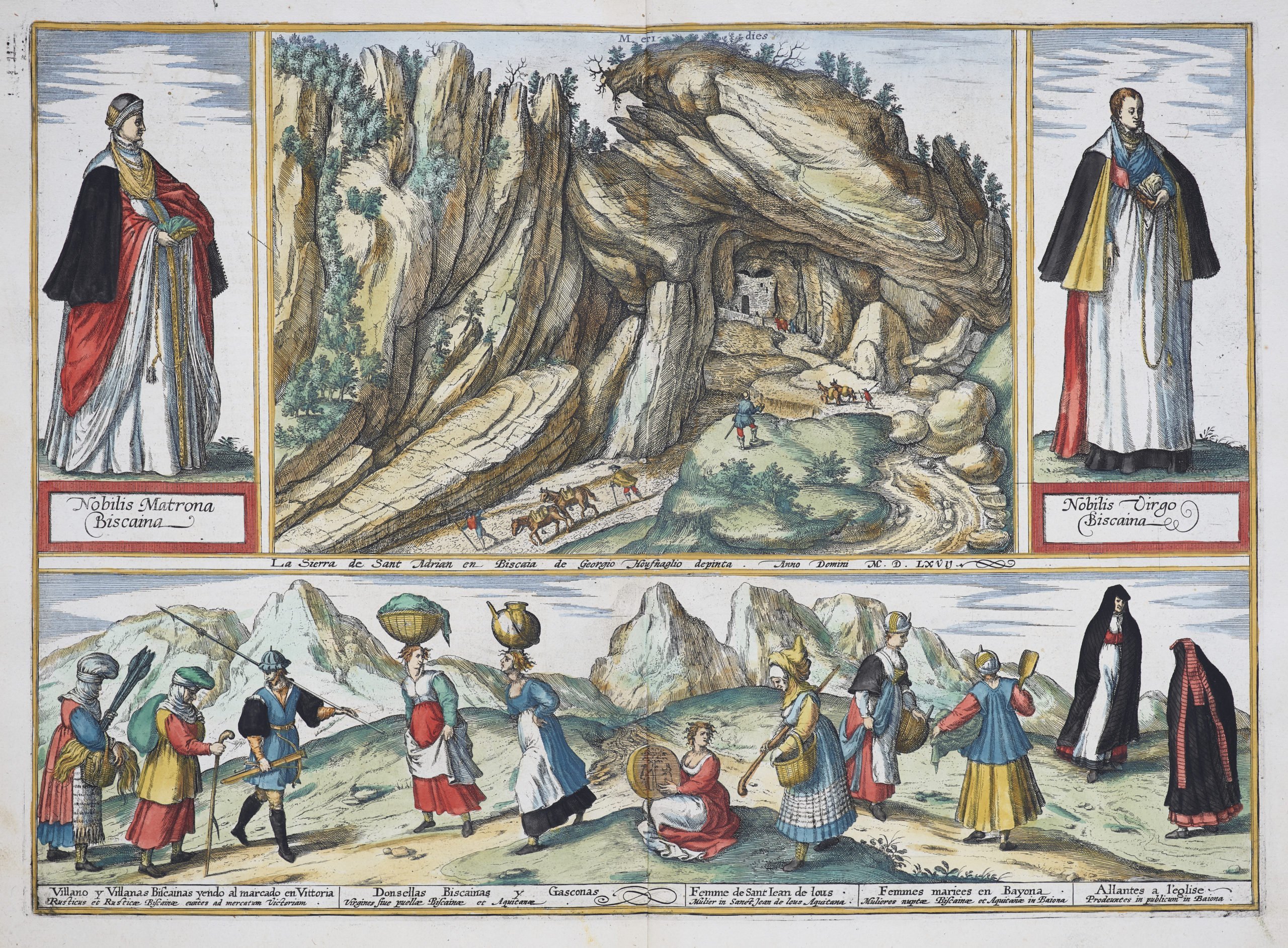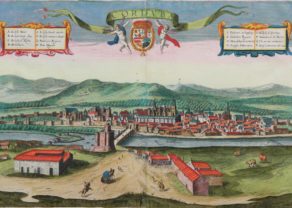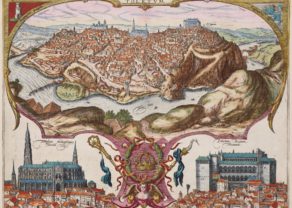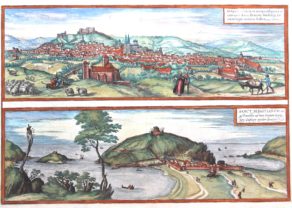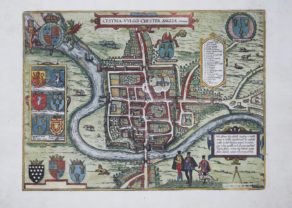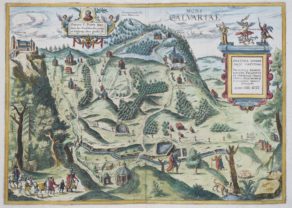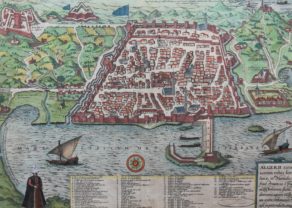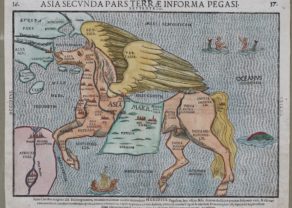San Adrian (Navarre) – La Sierra de Sant Adrian en Biscaia
Detail
Date of first edition: 1596
Date of this edition: 1623
Dimensions (not including margins): 32,5 x 44,5 cm
Condition: excellent. Sharp copper printing printed on paper. Centre fold is as published. Old hand coloured. Wide margins.
Condition rating: A+
Verso: text in Latin
From: the atlas Civitatis Urbis Terrarum (V: Urbium Praeipuarum Mundi Theatrum Quintum Auctore Georgio Braunio Agrippinate), first published 1596, this edition 1623 (by Petrus von Brachel), Köln
In stock
San Adrian commented by Braun (on verso):
“Spain is mountainous almost everywhere, but the Pyrenees surpass the other ranges in breadth and length. And since there are very many experienced miners in Spain, they have been able to survey the rocks, dig tunnels and thereby make it possible to pass through. A particularly fine example can be seen in this place in the Pyrenees, on the border of Spain and France. In the mountain of St Adrian, on the road that leads to France, there is a tunnel through which travellers can pass backwards and forwards.”
Taschen on San Adrian:
Presented across this double page is a rocky landscape in the western foothills of the Pyrenees, south of the Bay of Biscay between San Sebastian and Vitoria-Gasteiz, capital of the province of Alava. A natural cave carved out of the rock by water was enlarged to create a tunnel easily large enough for pedestrian traffic between Spain and France, on a section of the way of St James. As one of the central routes through the Pyrenees, the tunnel was heavily used from the 15th to the 18th century. In the 16th century an inn for pilgrims opened inside the tunnel; on the French side, which was shut with gates at night, a toll post was established. Only in the 18th century, when the king of Spain built a paved road from Madrid to France, did the volume of traffic through the San Adrian tunnel start to decline. Illustrated on either side of the picture of the tunnel entrance and in the lower half of the plate are a number of costumed figures in traditional dress: on the left a noble Biscayan matron, on the right a noble Biscayan maiden and below (from left to right): a Biscayan peasant man and women on the way to market in Vitoria / Biscayan and Gascon maidens or girls / Woman from Saint-Jean-de-Luz, Aquitaine / Married Biscayan and Gascon women from Bayonne / Women on the way to church in Bayonne.
Related items
-

Antequera (Andalusia)
by Georg Braun and Frans HogenbergPrice (without VAT, possibly to be added): €475,00 / $527,25 / £422,75 -

Cordoba – Corduba
by Georg Braun and Frans HogenbergPrice (without VAT, possibly to be added): €1 200,00 / $1 332,00 / £1 068,00Idyllic view full of history
-

Toledo (Castile) – Toletum
by Georg Braun and Frans HogenbergPrice (without VAT, possibly to be added): €1 500,00 / $1 665,00 / £1 335,00 -

Burgos and San Sebastian
by Georg Braun and Frans HogenbergPrice (without VAT, possibly to be added): €600,00 / $666,00 / £534,00
